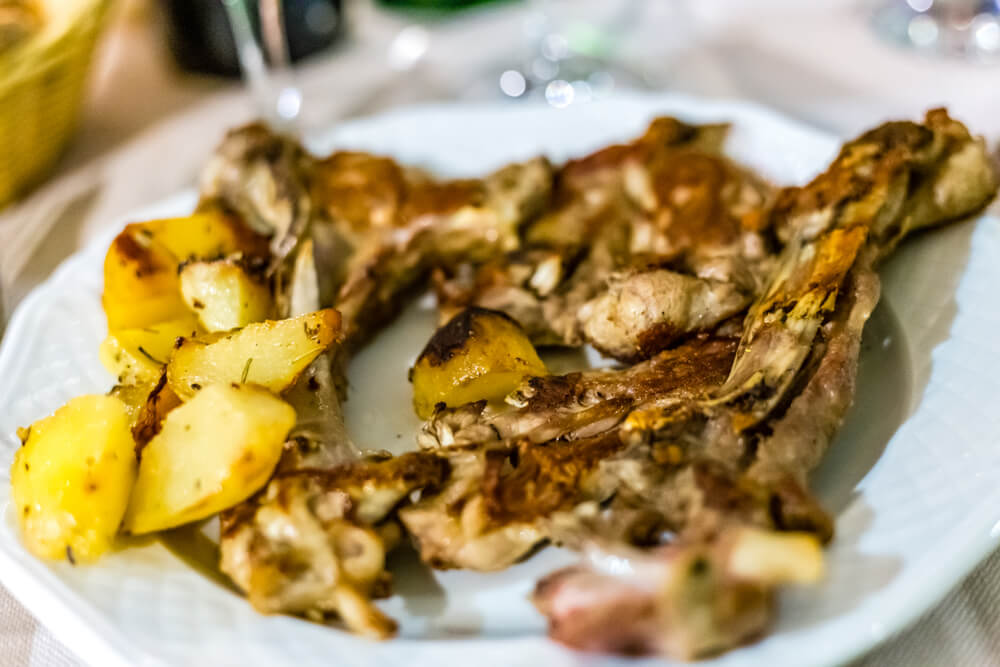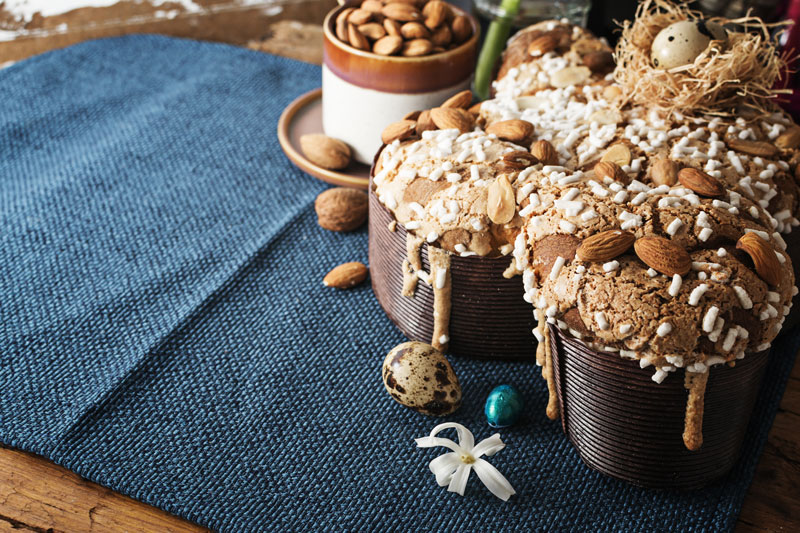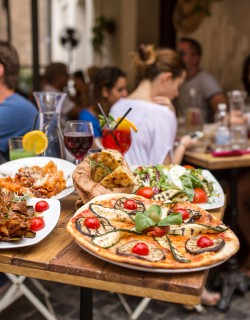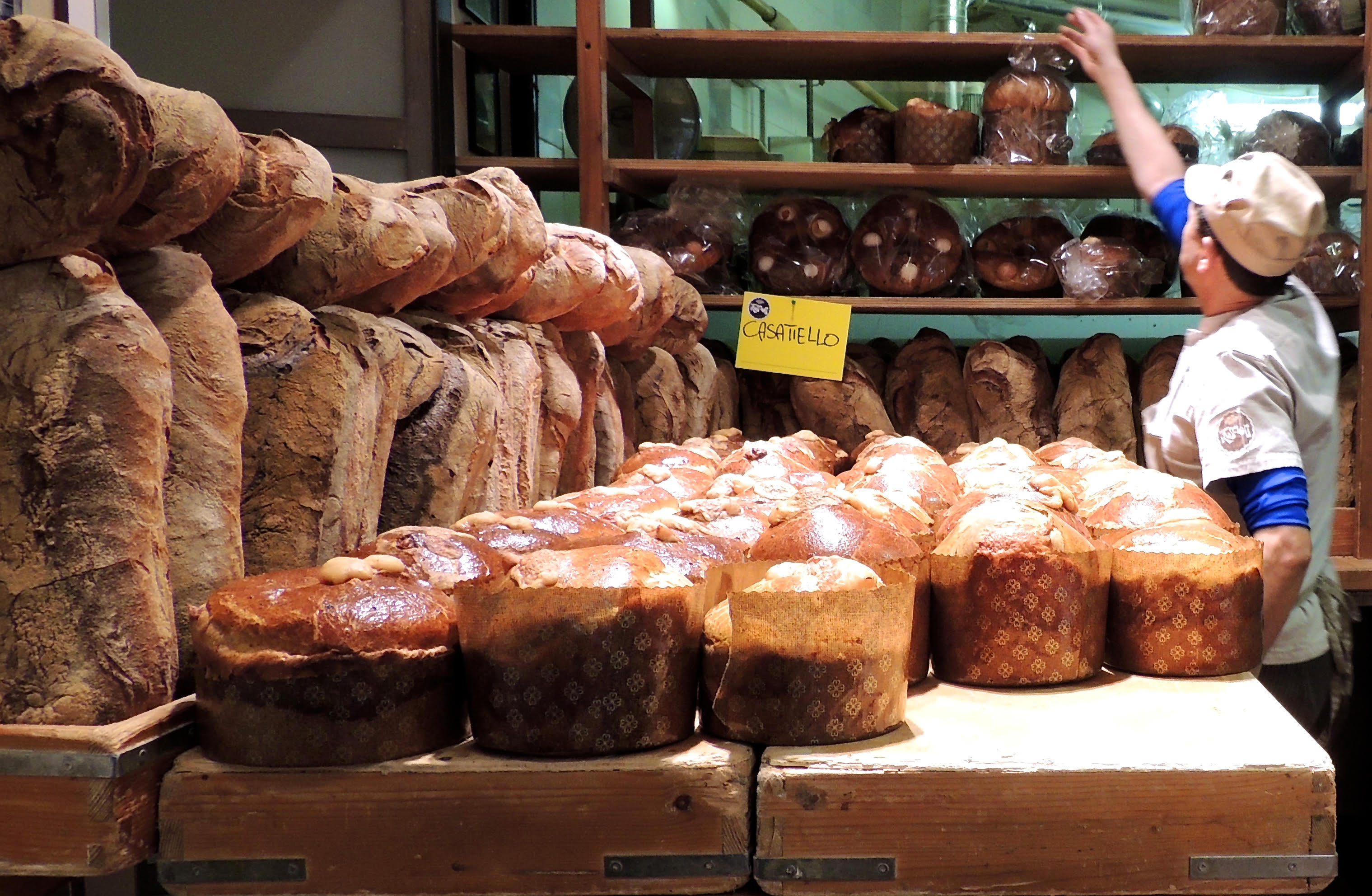
Easter is one of the best times of the year to visit the Eternal City. Winter is finally over, and the unseasonal snows that caused panic in the piazzas and sent hot-water bottle sales soaring are firmly in the rear-view mirror. What better way to ring in the onrushing Spring than taking part in the Easter week celebrations?
The dazzling religious procession of the Via Crucis and solemn masses in St. Peter’s make for a spectacular festival of the senses, but as with any Italian celebration worthy of the name, food naturally plays a starring role. The sacrifices of Lent have finished, so do as the Romans do and pile your plate high with seasonal specialties.
Many of these dishes are only found at Easter, so if you are lucky enough to be coming to Italy during this period take the unique opportunity to sample recipes redolent of the Spring and rich in fascinating religious symbolism. Here is our guide to some of the unique foods to look out for.
Abbacchio alla Scottadito (Grilled Roman Lamb)
Lamb will be the proud centrepiece of lunch tables all across the world on Easter Sunday, and the Eternal City is no exception. This tradition stretches back to the Jewish festival of Passover, when a lamb is sacrificed every Spring to mark the deliverance of the Israelites from slavery and plague in ancient Egypt.
Christians adapted this symbolism to represent Jesus’ self-sacrifice during his crucifixion, honouring the ‘lamb of God’ with a symbolically charged meal. You might know that agnello is the Italian word for lamb, but in Rome you are more likely to be offered abbacchio.
This is a young lamb that has not yet been weaned from its mother’s milk, and is highly prized for its delicate flavour. When Romans flee to the countryside and fire up their barbecues on Pasquetta (Easter Monday), Abbacchio alla Scottadito is usually top of the menu.
Cutlets are marinated in garlic, rosemary and olive oil, tossed onto a flaming barbecue and grilled until charred. Scottadito literally means ‘burned finger,’ and the name gives you a clue as to what you are in for. Muster your courage and grab the bone whilst it’s still fiercely hot; savour the delicious flavour, and nurse your scalded digits like a true Romano.
Coratella con i Carciofi (Lamb Offal with Artichokes)
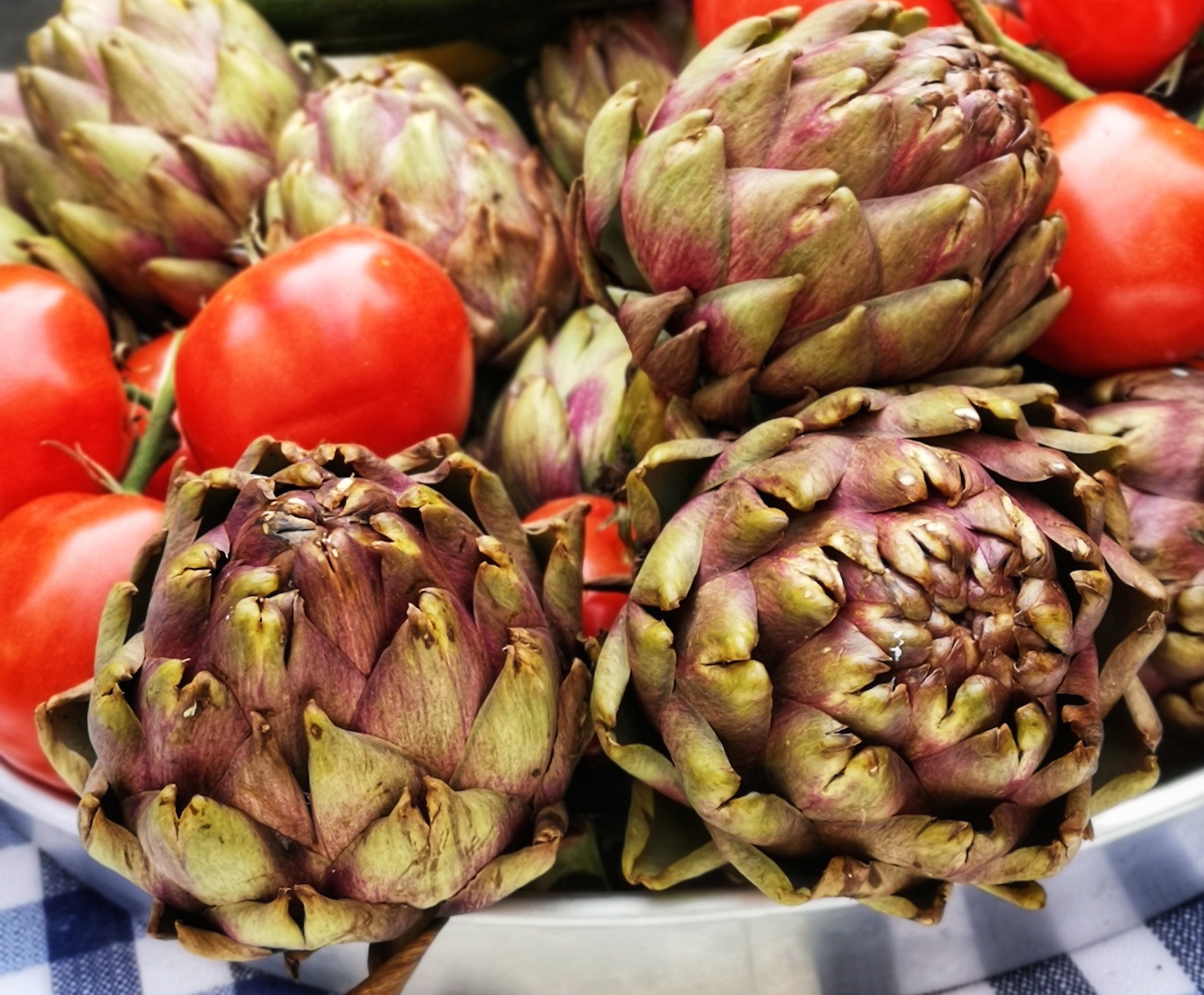
Rome’s denizens don’t limit their lamb-love to the conventional cuts we are all familiar with, and this very Roman method of preparing it might only appeal to more adventurous palates. A major part of the city’s cuisine is constituted by il quinto quarto, which literally means ‘the fifth quarter,’ or the animal’s usually invisible insides.
Testaccio’s slaughterhouse workers were often paid in kind with the cheap but nourishing leftovers of their trade, and offal dishes are still one of the centrepieces of the Roman culinary landscape. You will be sure to encounter staples like tripe in any Roman trattoria, but at Easter keep an eye out for coratella.
This is a mix of all the lamb’s major edible internal organs: lungs, heart, liver and spleen all go into the pot, combined with tender artichokes (carciofi) and white wine. Traditionally you should be tucking into this dish for breakfast on Easter Sunday, accompanied with salami and boiled eggs, all washed down with a cup of steaming hot chocolate!
If the thought of a savoury plate of intestines with your morning hot chocolate seems a step too far, you will still earn plenty of kudos if you order coratella for lunch or dinner instead.
Torta Pasqualina (Ligurian Easter Tart)

Vegetarians breathe a deep sigh of relief: not all Italian Easter dishes are based on sheep. Originally hailing from Genoa and eaten in Liguria since at least the sixteenth-century, this is a savoury vegetarian tart stuffed full of eggs, a Genovese cheese called prescinsêua (like a tangy ricotta), and a leafy Spring vegetable such as chard or beet-tops.
Sounds pretty simple? Not so fast. According to tradition, the tart had to be rigorously composed of no fewer than 33 layers of razor-thin pastry, one for each year that Christ spent on earth.
These days the 33 layers are usually reduced to a more manageable 8-10, but it is still a painstaking and time-consuming process. The torta pasqualina is now eaten all over Italy despite its regional origins, and you will see it adorning the shop-windows of innumerable bakeries and delicatessens throughout the city. Stop off at the Aladdin’s cave of Volpetti in Testaccio and try it for yourself.
Colomba di Pasqua (Dove-Shaped Easter Cake)
If lamb marks the presence of Christ at the Easter table, another member of the holy Trinity makes its appearance in the sweet Colomba cake. The cake takes the symbolic shape of a dove, representing the Holy Spirit in Catholic worship, and is one of the defining Easter foods for all Italians. Like the famous Christmas Panettone, the Colomba is an eggy cake studded with candied fruits and covered with crystallised sugar and almonds.
Whilst the origins of the cake’s unusual shape are obscure, according to one tradition a young girl from Pavia managed to save her town from invasion by baking a cake in this shape as a peace-offering to a ruthless Lombard king bent on the city’s destruction. The truth is probably more prosaic: the modern cake can be traced back to a successful marketing campaign by a Milanese baker in the 1930s, but don’t let that put you off – this proud symbol of an Italian Easter is as delicious as it is iconic. Try the classic version made by the historic bakery Antico Forno Roscioli, which is a hive of activity at in the days leading up to Easter.
Pastiera (Neapolitan Easter Cake)
Maybe the most distinctive Italian Easter specialty of all, pastiera is a venerable Neapolitan dessert packed with unusual ingredients chosen as much for their symbolic resonances as for their taste. Pastry is filled with ricotta, eggs, whole grains of wheat and candied citron, all infused with orange blossom water. Legends concerning its origin are numerous.
According to one, the wives of a group of fishermen lost at sea left offerings of these ingredients on a local beach in hope of their salvation. The sea relented and returned the men safely, and in the meantime the offerings had miraculously transformed into a cake topped with a lattice of pastry recalling the fishermen’s nets.
Whole grains of wheat have been a traditional Springtime sign of fertility and prosperity since antiquity, but it was probably the sisters of the Neapolitan convent of San Gregorio Armeno who formalised the recipe and gave it a special Christian context.
Wanting to make an Easter food reflecting the miracle of Christ’s resurrection, the nuns combined the grains with ricotta, eggs symbolising new life, the blossoms of the orange trees blooming in their cloister that signalled the coming of Spring, and exotic spices like cedar and cinnamon from far-off lands that spoke to their hopes of the world’s conversion to Christianity. The industrious nuns quickly turned their pious baking into big business, feeding the city’s middle classes with hundreds of their unique cakes every Easter.
Although pastiera is a proudly Neapolitan concoction Romans have a taste for it too, and you can take get your hands on it in any number of the city’s pastry shops, such as the gourmet heaven of Pastificio Bonci.
Coming to Rome this Easter? Then make sure to check out our range of expert-led guided itineraries, from group tours of the Vatican and the Colosseum to off-the-beaten-path sites that only the locals know!
